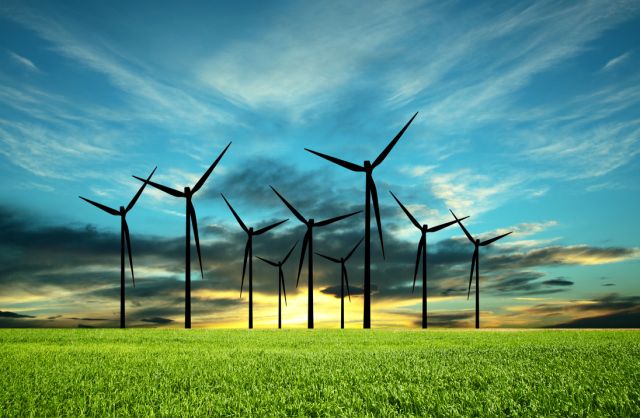
While the energy sector as a whole is slowly feeling the effects from the increasing presence of renewable power sources, coal has been slowed perhaps more than any.
In this movement known as decarbonizing, last year saw the mass retirement of coal power plants with 11 such facilities shutdown in the United States. During the Sustainable Energy in America Factbook webinar on April 1, panelists from the energy sector discussed the decline of coal as it relates to the rise of renewable energy sources. The Factbook is produced by the Business Council for Sustainable Energy, which bills itself as “advocates for energy and environmental policies that promote markets for clean, efficient and sustainable energy products and services.”
Coal accounted for 27% of the power generation in the U.S. in 2018, which was its lowest since 1979. Renewables, meanwhile, contributed about 20% of the energy generation while gas even moved up to 35% of the energy generation in this country. Nuclear generation continues to grow at a rate of around 20% each year.
“So you can see an essential decarbonization that is going on across the mix of power generation in the US,” said Ethan Zindler, who is head of Americas with Bloomberg New Energy Finance. “That’s all good news.”
The majority of the panelists agreed that decarbonization is necessary in order for cleaner air and also to slow global warming. But where they all differed was how to go about it. Some support carbon pricing or a carbon tax, which would make it financially advantageous to decarbonize or at least use less carbon.
Emily Duncan, director of the Federal Government Affairs National Grid, sees some clear advantages to carbon pricing.
“We certainly support carbon pricing. We think it should apply not just to electricity but to renewable,” she said. “Where the rubber hits the road for us is trying to figure out what to do with the revenues. We definitely think a portion of the revenues should go to vulnerable communities.
“Part of our job at National Grid is keeping energy affordable. We have customers who their energy bill may be the biggest bill they pay every month so making sure we keep that reasonable and that is important to us so when we look at carbon pricing we are trying to figure out what the effective way to use the revenues. But it is certainly a policy we support and we would like to see it get some legs, hopefully soon.”
Charles Hernick, director of policy and advocacy for Citizens for Responsible Energy Solutions, said his group is not sure carbon pricing is the answer.
“I think it’s pretty interesting to see how much the conversation changed around the discussion on carbon pricing, even in just the last few months the talk of the Green New Deal suddenly went out the window,” Hernick said. “My organization, we just don’t view carbon pricing as realistic in the most near term but it is realistic and actually happening in the United States. One-third of the U.S. economy has some type of carbon price for the energy generation sector.”
But there isn’t much of a debate about the growth of renewables in the power sector in the US. The energy is inexpensive by historical standards to consumers and the number of people working the various renewable sectors is growing. Major companies like AT&T, Walmart, Facebook and Exxon Mobil Corp. are buying record amounts of renewable energy sources, particularly solar and wind.
Facebook purchased 2,468 megawatts (MW) of solar capacity in 2018 while Exxon Mobil bought 325 MW of solar capacity and 250 MW of wind capacity.
“Those are actually all trends that have been pretty consistent over the last six or seven years that we’ve doing this report,” Zindler said. “This is the general direction of travel of the U.S. energy sector. But there were definitely some divergences.
“Energy productivity stalled. I know you say how could we have gotten good on energy efficiency but not on energy productivity? Energy consumption overall went up, which finally if you are worried about CO2 emissions this is great news. CO2 emissions in U.S. rose rather precipitously last year, so raising no questions about whether or not the U.S. can do its part to try to address climate change.”
Solar proved to be a driving force in the growth of renewable energy with 11.7 gigawatt (GW) of new capacity in 2018 and wind wasn’t far behind with 7.5 GW of new capacity. Still hydropower represented the biggest share of the renewable energy generation in the U.S. by providing about half of the total.
And as the cost of renewable energy continues to get cheaper and the jobs continue to increase, the investment in the sector also continues to grow. Investments hit $15 billion in 2017, which is up from about $1 billion in 1990. Utility spending and energy savings performance contracts were the main sources of investment, though property-assessed clean energy programs are a fast-rising source of growth.
But it wasn’t good news on the energy front last year. As the economy grew, overall energy consumption rose and greenhouse gas emissions also went up after considerable reductions in previous years.
According to the Energy Information Administration, the number of days need to turn on cooling in American homes reached its highest rate ever in 2018 (1,592 cooling degree-days). This is an additional indication that the climate is changing, and that we are using more power to offset those changes, according to Zindler.
“When you grow your economy fast there is the potential that you grow energy demand fast,” Zindler said. “That’s what happened last year.
“We can’t always grow and not have energy growth. The two will sometimes correlate, especially when the economy grows at a more reasonable pace.”
Recommended Reading
Deep Well Services, CNX Launch JV AutoSep Technologies
2024-04-25 - AutoSep Technologies, a joint venture between Deep Well Services and CNX Resources, will provide automated conventional flowback operations to the oil and gas industry.
EQT Sees Clear Path to $5B in Potential Divestments
2024-04-24 - EQT Corp. executives said that an April deal with Equinor has been a catalyst for talks with potential buyers as the company looks to shed debt for its Equitrans Midstream acquisition.
Matador Hoards Dry Powder for Potential M&A, Adds Delaware Acreage
2024-04-24 - Delaware-focused E&P Matador Resources is growing oil production, expanding midstream capacity, keeping debt low and hunting for M&A opportunities.
TotalEnergies, Vanguard Renewables Form RNG JV in US
2024-04-24 - Total Energies and Vanguard Renewable’s equally owned joint venture initially aims to advance 10 RNG projects into construction during the next 12 months.
Ithaca Energy to Buy Eni's UK Assets in $938MM North Sea Deal
2024-04-23 - Eni, one of Italy's biggest energy companies, will transfer its U.K. business in exchange for 38.5% of Ithaca's share capital, while the existing Ithaca Energy shareholders will own the remaining 61.5% of the combined group.




